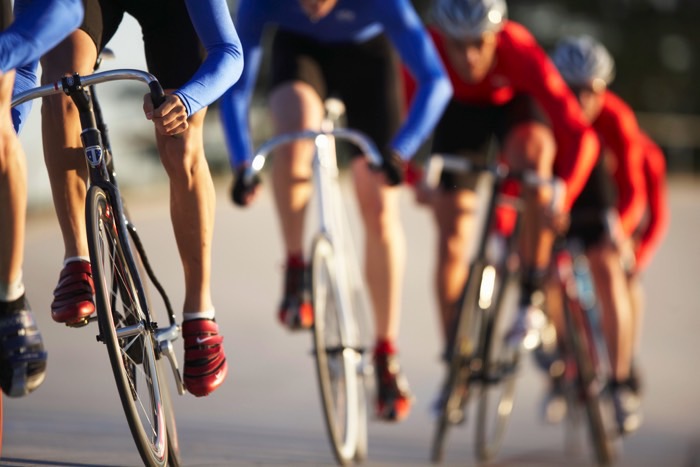 As a cyclist, have you ever been in the middle of a hike, race or a simple ride around the neighborhood, when you realize that respiratory fatigue has hit your body? While your mind is on cycling, your breathing becomes shallow, you have trouble getting deep breaths, and your muscles feel on fire. This will result in a decrease in bike speed, which could lead you to lose the race, delay your hike or make you just want to walk back home. In a race scenario, after spending months and even years training your endurance, you shouldn’t let respiratory fatigue take you out of the race. During training, cyclists often overlook the importance of breath training and respiratory fitness. What could respiratory muscle training do for your cycling endurance and performance?
As a cyclist, have you ever been in the middle of a hike, race or a simple ride around the neighborhood, when you realize that respiratory fatigue has hit your body? While your mind is on cycling, your breathing becomes shallow, you have trouble getting deep breaths, and your muscles feel on fire. This will result in a decrease in bike speed, which could lead you to lose the race, delay your hike or make you just want to walk back home. In a race scenario, after spending months and even years training your endurance, you shouldn’t let respiratory fatigue take you out of the race. During training, cyclists often overlook the importance of breath training and respiratory fitness. What could respiratory muscle training do for your cycling endurance and performance?
Importance of Training your Respiratory Muscles
According to independent supporting studies, the respiratory muscles are the single and biggest limiting factor to your cycling training and race performances. By training your respiratory system to increase its oxygen intake, you can increase the amount of energy you produce by breaking down glucose and lactic acid faster. This ultimately increases your respiratory fitness and enables you to release more energy during cycle training and racing.
-Jeff Ender, a cyclist, illustrates the negative consequences of respiratory muscle fatigue:
“Lactate threshold training is inordinately taxing to an individuals’ cardio-respiratory system. This is the point where lactic acid production exceeds elimination and produces intense muscle fatigue concomitant with labored breathing.”
As a cyclist, you can avoid labored breathing and respiratory fatigue by decreasing your level of exertion when training at or just below your lactate threshold. Effective training of all 12 sets of your respiratory muscles provides you with the ultimate level of breathing strength, power, and endurance to carry you through your next race.
How a Breathing Training Device Can Help
Cyclists need breathing resistance devices during training and racing for a variety of reasons, including:
• Expanding lung capacity
• Increasing oxygen intake
• Lowering heart rate
• Greater energy production
• More explosive breaking and sprinting
• Faster and easier pace-line speeds
Respiratory Training for Improved Cycling Performance
Respiratory training enables you to optimize your cycling performance and train your respiratory muscles for new and improved energy and endurance levels. By training your respiratory muscles to breathe better, you can perfect your race management and maintain the best form for cycling. Gain a competitive edge in your next race by maintaining focus on respiratory muscle fitness.
Increase your Cycling Energy and Endurance
You need the highest level of endurance when training, cycling up climbs, attempting blasts, changing speeds, or racing in the mountains.
Kaz Milas, 2007/2008 FIAC Elite National Track Champion, knows the importance of training to prepare for cycling track events.
“I have been training since I was very young so I am quite attuned to my body. I could tell the first week of use that the PowerLung was going to be an important component of my training routine.
The PowerLung helps me to change speeds with authority which is important in all cycling track events. It also helps me to recover between events.”
Kaz has been training for years, but he was missing that burst of energy to help him change speeds and recover during cycling events. Click here to learn more about how others have produced the optimum level of energy to carry them through cycling training and racing.

